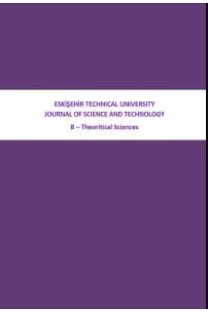NUCLEAR ASYMPTOTIC NORMALIZATION COEFFICIENT FOR 27Al →26Mg+p REACTION
The 26Mg(p,g)27Al reaction is important in nuclear astrophysics as it play a crucial role in understanding the nucleosynthesis processes in red giants and Wolf-Rayet stars. The 26Mg(p,g)27Al reaction is responsible for the production of 27Al in these stars, while the 26Mg(3He,d)27Al reaction provides information on the asymptotic normalization coefficient for the ground state of 27Al.The asymptotic normalization coefficient (ANC) method is an indirect method that provides information on the normalization of the overlap functions for a given reaction. This information is crucial for nuclear astrophysics as it allows for the calculation of the direct component of the reaction rate at astrophysical relevant energies. In this work, The angular distribution of the 26Mg(3He,d)27Al reaction have been analyzed using separate sets of optical potentials via the Distorted Wave Born Approximation which allows for a better understanding of the reaction mechanism and the determination of the ANC. Consequently, the cross section and Astrophysical S factor for 27Al→26Mg + p have been calculated for the direct capture.
Anahtar Kelimeler:
Direct reaction, , DWBA analysis, , Nuclear Astrophysics, , Asymptotic normalization coefficient
NUCLEAR ASYMPTOTIC NORMALIZATION COEFFICIENT FOR 27Al →26Mg+p REACTION
The 26Mg(p,ɣ)27Al reaction is important in nuclear astrophysics as it play a crucial role in understanding the nucleosynthesis processes in red giants and Wolf-Rayet stars. The 26Mg(p,ɣ)27Al reaction is responsible for the production of 27Al in these stars, while the 26Mg(3He,d)27Al reaction provides information on the asymptotic normalization coefficient for the ground state of 27Al.The asymptotic normalization coefficient (ANC) method is an indirect method that provides information on the normalization of the overlap functions for a given reaction. This information is crucial for nuclear astrophysics as it allows for the calculation of the direct component of the reaction rate at astrophysical relevant energies.In this work, the angular distribution of the 26Mg(3He,d)27Al reaction have been analyzed using separate sets of optical potentials via the Distorted Wave Born Approximation which allows for a better understanding of the reaction mechanism and the determination of the ANC. Consequently,thecross section and Astrophysical S factor for 27Al→26Mg + p have been calculated for the direct capture
Keywords:
Direct reaction, DWBA analysis, Asymptotic normalization coefficient, Nuclear astrophysics,
___
- [1] Langanke K,Wiescher M. Nuclear reactions and stellar processes. Rep. Prog. Phys. 2001;64: 1657–1701.
- [2] Diehl R, ‘et al.’ Radioactive 26Al from massive stars in the galaxy. Nature. 2006; 439: 45-47.
- [3] Käppeler F, Gallino R, Bisterzo S, AokiW.Thes process: Nuclear physics, stellar models, and observations. Rev. Mod. Phys. 2011; 83: 157.
- [4] D'Agata G, Kilic AI, ‘et al.’.26Si(p,γ)27P direct proton capture by means of the asymptotic normalization coefficients method for mirror nuclei.Phy. Rev. C. 2021; 015806: 103.
- [5] Mukhamedzhanov AM, Burjan V, Gulino M, Hons Z, Kroha V, McCleskeyM,MrázekJ, Nguyen N, NunesFM, PiskořŠ,‘et al.’.Asymptotic normalization coefficients from the 14C(d,p)15C reaction Phy. Rev. C. 2011; 84: 024616.
- [6] Kiss GG, La Cognata M, Spitaleri C, Yarmukhamedov R, WiedenhöverI, BabyLT, CherubiniS, CvetinovicA, D’AgataG, FigueraP,‘et al.’Astrophysical S-factor for the 3He(α,γ)7Be reaction via the asymptotic normalization coefficient (ANC) method. Phys. Lett. B. 2020; 807: 135606.
- [7] Tribble RE, Bertulani CA, La Cognata M, Mukhamedzhanov AM, Spitaleri C. Indirect tecniques in nuclear astrophysics. Rep. Prog. Phys. 2014;77:106901.
- [8] Baur G, Bertulani CA, Rebel H. Coulomb dissociation as a source of information on radiative capture processes of astrophysical interest. Nucl. Phys. A 1986; 458: 188-204.
- [9] Spitaleri C, La Cognata M, Lamia L, Mukhamedzhanov AM, Pizzone RG. Nuclear astrophysics and the Trojan Horse Method. Eur. Phys. J. A. 2016; 52: 77.
- [10] Hodgson PE. Nuclear reactions and structure. Oxford, UK Oxford Clarendon Press, 1971
- [11] TimofeyukNK, JohnsonRC,MukhamedzhanovAM.Relation between Proton and Neutron Asymptotic Normalization Coefficients for Light Mirror Nuclei and its Relevance to Nuclear Astrophysics. Phys. Rev. Lett.2003; 232501: 91.
- [12] TracheL, AzhariA, CarstoiuF, ClarkHL, GagliardiCA, LiuYW, MukhamedzhanovAM, TangX, TimofeyukN, TribbleRE. Asymptotic normalization coefficients for 8B →7Be+p from a study of 8 Li →7Li+n. Phys. Rev. C. 2003; 67: 06280.
- [13] P.Kunz. Finite range DWBA code dwuck-5. http://spot.colorado.edu/∼kunz/DWBA.html, 1990
- [14] ThompsonIJ. Comp. Phys. Rep. 7 1988 167 (FRESCO, http://www.fresco.org.uk).
- [15] VernotteJ, Berrier-RonsinG, KalifaJ, TamisierR, WildenthalBH. Spectroscopic factors from one-proton stripping reactions on sd-shell nuclei: experimental measurements and shell-model calculations. Nucl. Phys. A. 1994; 571: 1-42.
- [16] Satchler GR.The distorted-waves theory of direct nuclear reactions with spin-orbit effects. Nucl. Phys. 1964;55: 1-33.
- [17] Bertulani CA. RADCAP: A potential model tool for direct capture reactions. Comp. Phy. Com. 2003;156: 123-141.
- [18] Doekes C, Kean DC, Elliott RV, Spear RH. High Resolution Study of the Energy Levels of 27Al. 2011; 49 (4): 483-485.
- [19] Smit JJA, Reinecke JPL, Meyer MA, Reitmann D, Endt PM, The excited states of 27Al, Nucl. Phy. A. 1982; 377: 15-40.
- [20] Mukhammedzhanov AM, Tribble RE and Timofeyuk NK. Possibility to determine the astrophysical S factor for the 7Be(p,g)8B radiative capture from analysis of the 7Be(3He,d)8B reaction. Phy. Rev. C. 1995; 51: 3472-3478.
- [21] Sergi ML, D’Agat, G, Guardo GL, Rapisarda GG, Burjan V Cherubini S, Gulino M. Indelicato I, La Cognata M et al. Trojan Horse Investigation for AGB Stellar Nucleosynthesis. Universe 2022;8: 128.
- ISSN: 2667-419X
- Yayın Aralığı: Yılda 2 Sayı
- Başlangıç: 2010
- Yayıncı: Eskişehir Teknik Üniversitesi
